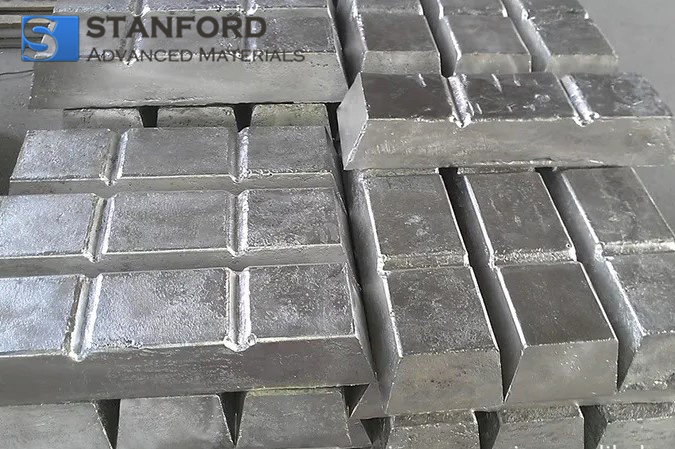An Overview Of Hafnium Applications
Hafnium belongs with Ti and Zr to Group 4 of the periodic table. It has an atomic number of 72 and an atomic mass of 178. The geochemical properties of hafnium and zirconium are largely comparable. The ionic radius of hafnium measures 71 pm, whereas that of zirconium is 72 pm. All zirconium minerals contain hafnium, and pure hafnium minerals have not been reported.

Magmatic and metamorphic rocks typically contain low concentrations of hafnium. Hafnium can be used as an indicator for zirconium mineralisation. Elevated hafnium values denote the presence of felsic rocks, particularly intrusive bodies. The resistant nature of hafnium-bearing minerals restricts the concentration of hafnium in natural water. Hafnium is present in natural waters at concentrations below 0.1 µg l-1.

Wastewater constitutes the primary anthropogenic source of hafnium. Hafnium is utilised in the manufacture of light bulb filaments, X-ray cathode tubes and reactor control rods. It is also employed in the production of alloys with Ti, Nb, Ta and Fe, and in the ceramics industry. Several studies conducted during the 1960s and 1970s have indicated that hafnium concentrations in areas with industrial activity are not elevated. Geological sources of hafnium appear to be more significant than anthropogenic ones. Hafnium does not have any known biological function. Available data on the toxicity of hafnium are limited; however, it is generally regarded as minimally toxic. No adverse environmental effects have been reported. Given the limited information on the effects of hafnium on human health, it should be treated as potentially toxic.
Hafnium

 Bars
Bars
 Beads & Spheres
Beads & Spheres
 Bolts & Nuts
Bolts & Nuts
 Crucibles
Crucibles
 Discs
Discs
 Fibers & Fabrics
Fibers & Fabrics
 Films
Films
 Flake
Flake
 Foams
Foams
 Foil
Foil
 Granules
Granules
 Honeycombs
Honeycombs
 Ink
Ink
 Laminate
Laminate
 Lumps
Lumps
 Meshes
Meshes
 Metallised Film
Metallised Film
 Plate
Plate
 Powders
Powders
 Rod
Rod
 Sheets
Sheets
 Single Crystals
Single Crystals
 Sputtering Target
Sputtering Target
 Tubes
Tubes
 Washer
Washer
 Wires
Wires
 Converters & Calculators
Converters & Calculators
 Write for Us
Write for Us

 Chin Trento
Chin Trento



